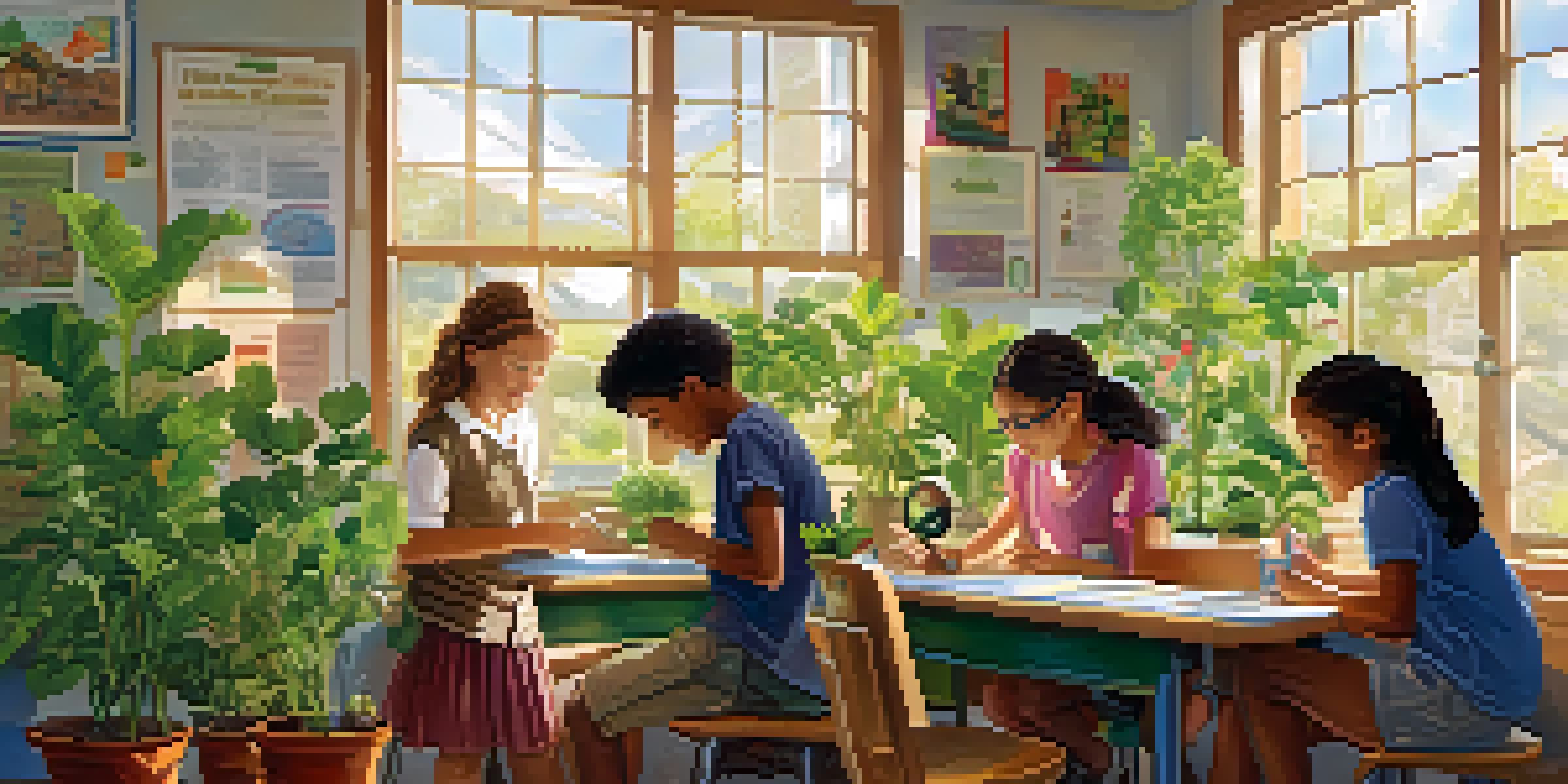The Role of Curiosity in Constructivist Learning

Understanding Constructivist Learning and Its Foundations
Constructivist learning is a pedagogical approach where learners actively build their own understanding. This method emphasizes the importance of experiences, allowing students to construct knowledge rather than passively receive it. In this framework, the learner's prior knowledge and experiences play a crucial role in shaping their educational journey.
Curiosity is the engine of achievement.
At its core, constructivism encourages exploration and critical thinking, which are essential for meaningful learning. Instead of rote memorization, students are encouraged to engage with content deeply, fostering a sense of ownership over their learning process. This is where curiosity becomes a pivotal element, driving learners to ask questions and seek answers.
By nurturing curiosity, educators can create an environment where students feel empowered to investigate topics of interest. This not only enhances engagement but also leads to a richer understanding of complex concepts, making learning more relevant and enjoyable.
Curiosity: The Catalyst for Active Learning
Curiosity acts as a powerful catalyst in the constructivist learning process. When students are curious, they are more likely to take initiative in their learning, exploring subjects beyond the classroom curriculum. This intrinsic motivation fosters a deeper connection to the material, as learners seek out information that resonates with their interests.

For example, a student curious about marine biology might dive into related topics like ocean conservation or climate change. This exploration not only broadens their knowledge but also encourages interdisciplinary thinking, connecting ideas across various fields. As curiosity drives exploration, learners often develop critical skills such as problem-solving and analytical thinking.
Curiosity Fuels Active Learning
Curiosity encourages students to take initiative in their learning, leading to deeper engagement and exploration of subjects beyond the curriculum.
Moreover, curiosity promotes a sense of agency in learners, allowing them to steer their educational paths. When students pursue their interests, they become active participants in their learning experiences, leading to a more profound and lasting understanding of the material.
Creating a Curiosity-Driven Learning Environment
To foster curiosity in the classroom, educators need to create an environment that encourages exploration and questioning. This can be achieved by providing opportunities for hands-on activities, collaborative projects, and open discussions. When students feel safe to express their thoughts and questions, they are more likely to engage deeply with the content.
The important thing is not to stop questioning. Curiosity has its own reason for existing.
Incorporating real-world scenarios into lessons can also stimulate curiosity. For instance, presenting a problem related to environmental issues can prompt students to explore various solutions, encouraging them to research and analyze different perspectives. This approach not only piques interest but also helps students connect their learning to real-life situations.
Additionally, educators can model curiosity by sharing their own interests and questions. When teachers demonstrate a passion for learning, it inspires students to adopt a similar mindset. By cultivating a culture of curiosity, teachers can transform the learning experience into an exciting journey of discovery.
The Role of Questions in Encouraging Curiosity
Questions are the lifeblood of curiosity. When educators encourage students to ask questions, they create a dynamic learning experience where exploration is prioritized. This inquiry-based approach allows students to delve deeper into topics, fostering a sense of ownership over their learning.
For instance, instead of providing all the answers, teachers can guide students to formulate their own questions about a subject. This not only engages them but also promotes critical thinking skills as they seek to find solutions. By valuing student questions, educators reinforce the idea that curiosity is an essential part of learning.
Creating a Supportive Environment
Educators can foster curiosity by creating an environment that promotes exploration, hands-on activities, and open discussions.
Furthermore, questioning can lead to collaborative learning opportunities. When students share their inquiries with peers, it opens the door for discussions and knowledge exchange. This collaborative environment not only enhances understanding but also builds a supportive community where curiosity thrives.
Curiosity and Emotional Engagement in Learning
Curiosity is closely linked to emotional engagement, which plays a vital role in the learning process. When students are curious, they experience a sense of excitement and wonder, making learning more enjoyable. This emotional connection can lead to increased motivation and a desire to learn more.
For example, a student eager to uncover the mysteries of space may find themselves captivated by the lessons on astronomy. This emotional engagement not only enhances their understanding but also fosters a love for learning that can last a lifetime. By tapping into students' emotions, educators can create memorable learning experiences that resonate beyond the classroom.
Moreover, when learners feel emotionally connected to their subjects, they are more likely to persevere through challenges. Curiosity instills a sense of resilience, encouraging students to tackle difficult concepts with enthusiasm rather than frustration. This emotional aspect of learning is crucial for fostering a growth mindset.
Curiosity as a Tool for Lifelong Learning
Embracing curiosity in education prepares students for lifelong learning beyond the classroom. When learners develop a curiosity-driven mindset, they are more likely to continue exploring and seeking knowledge throughout their lives. This shift from a fixed mindset to a growth mindset is essential in our ever-changing world.
For instance, a curious individual might pursue new hobbies, delve into unfamiliar subjects, or stay informed about current events. This lifelong learning approach not only enriches their personal and professional lives but also fosters adaptability in various situations. Curiosity equips individuals with the skills to navigate an increasingly complex world.
Curiosity Drives Lifelong Learning
Embracing curiosity prepares students for lifelong learning, making them proactive learners who seek knowledge throughout their lives.
Additionally, cultivating curiosity in education helps students become proactive learners. When they recognize the value of asking questions and seeking answers, they develop a self-directed approach to learning. This ability to engage in continuous learning will serve them well in their future endeavors, whether academically or in their careers.
Overcoming Barriers to Curiosity in Learning
Despite its importance, several barriers can hinder curiosity in learning environments. Traditional educational practices often emphasize standardized testing and rote memorization, leaving little room for exploration. This rigid structure can stifle students' natural curiosity, leading to disengagement.
To combat these barriers, educators must advocate for more flexible and student-centered approaches. Incorporating project-based learning, where students tackle real-world problems, can reignite curiosity and foster deeper engagement. By creating a curriculum that values exploration, educators can help students rediscover their innate curiosity.

Additionally, fostering a growth mindset is essential in overcoming these challenges. Encouraging students to view mistakes as learning opportunities rather than failures can empower them to take risks and explore new ideas. By addressing these barriers, educators can create a thriving environment where curiosity flourishes.